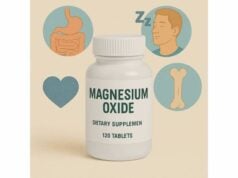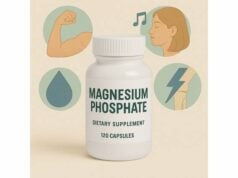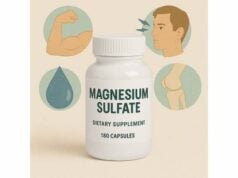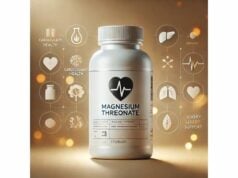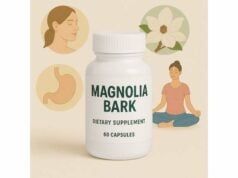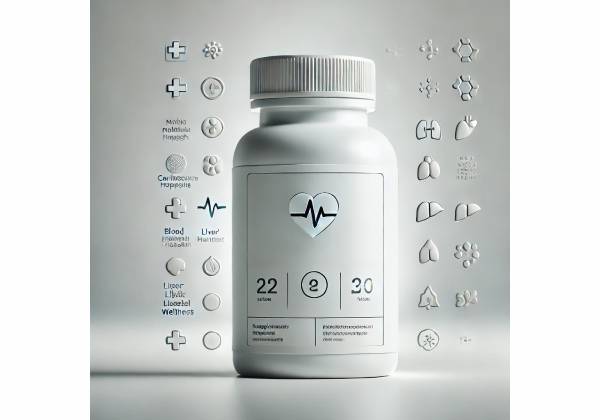
Magnolol is a bioactive compound concentrated in the bark of Magnolia officinalis, a tree long used in East Asian medicine. As a neolignan, magnolol shows a wide pharmacological profile: it modulates calming brain receptors, tempers inflammatory signaling, and counters oxidative stress. Early human research on magnolia bark extracts suggests benefits for stress and sleep quality, while preclinical work continues to map magnolol’s effects in the brain, skin, heart, and metabolic tissues. Because supplements vary—from purified magnolol to mixed bark extracts—the smartest approach is to match the form and dose to a clear goal (for example, unwinding before bed versus supporting skin comfort). This guide translates the research into practical steps: what magnolol is, how it appears to work, who may benefit, sensible dosing ranges, safety watchouts, and what to pair—or not pair—it with. You will also see where the evidence is strong, where it’s emerging, and what questions remain, so you can decide if magnolol belongs in your routine.
Essential Insights
- May promote calm and sleep continuity by modulating GABA-A receptors and dampening stress signaling.
- Shows anti-inflammatory and antioxidant activity that may benefit skin, cardiovascular, and metabolic health.
- Typical supplemental intake: 50–150 mg magnolol per day, or 200–500 mg/day of standardized magnolia bark extract (split doses).
- Safety caveat: magnolol has antiplatelet activity; combine cautiously with blood-thinners and stop 1–2 weeks before surgery.
- Avoid if pregnant or breastfeeding, or when using sedatives, strong CNS depressants, or anticoagulant/antiplatelet medications unless medically supervised.
Table of Contents
- What is magnolol?
- Does it work and key benefits?
- How to take it and forms
- What to stack and avoid
- Side effects and who should avoid
- What does the evidence say?
What is magnolol?
Magnolol is a biphenolic neolignan found primarily in Magnolia officinalis bark, often alongside its close isomer honokiol. In traditional formulas, the bark is used to ease tension, support digestion, and settle the mind. Modern supplements deliver magnolol either as a purified ingredient or within a standardized magnolia bark extract (MBE). Labels may state magnolol content explicitly or list “neolignans,” usually referring to magnolol plus honokiol percentages.
Chemically, magnolol’s two phenolic rings and allyl side chains drive both membrane activity and antioxidant behavior. In cells, magnolol can quench reactive oxygen species, modulate lipid peroxidation, and influence enzymes and receptors linked to inflammation and neuromodulation. It interacts with GABA-A receptors (the same calming system targeted by certain sleep and anxiety drugs) as a positive allosteric modulator. It also shows activity across inflammatory pathways (such as NF-κB) and nuclear receptors (including PPARs) that govern metabolic flexibility and vascular tone.
Absorption and metabolism matter for real-world effects. Magnolol is lipophilic and undergoes phase-II metabolism (notably glucuronidation and sulfation). Oral bioavailability improves when taken with fat or formulated to enhance solubility (for example, micelles or lipid-based carriers). After ingestion, circulating forms may include conjugated metabolites, while free magnolol tends to concentrate within tissues such as liver, kidney, and, to a lesser extent, brain. These pharmacokinetics help explain why some studies report stronger effects with specialized delivery systems or higher divided doses rather than a single large dose.
In the marketplace you’ll see three broad options:
- Purified magnolol (capsules, powders): typically 50–150 mg per serving.
- Standardized MBE: often 20–60% combined neolignans; servings of 200–500 mg extract can deliver a meaningful magnolol dose.
- Topicals (creams, serums): 0.1–1% magnolol for targeted skin support in experimental or cosmetic formulas.
Because honokiol and magnolol often co-occur, people sometimes get both—by design. That can be useful (they share and complement several mechanisms), but it makes it important to read labels so you know how much magnolol you’re actually taking.
Does it work and key benefits?
Magnolol’s benefits cluster around three themes—calm and sleep quality, inflammatory balance (including skin comfort), and cardiometabolic support—with most human data coming from magnolia bark extracts and most mechanistic depth from cell and animal studies. Here’s what the evidence and plausible mechanisms suggest:
Calm and sleep continuity. By positively modulating GABA-A receptors, magnolol appears to enhance inhibitory signaling, which the brain uses to reduce arousal and quiet “mental noise.” In early human work with magnolia extracts, participants reported better sleep quality and lower perceived stress. In practice, many users take magnolol (or MBE) in the evening and describe smoother sleep onset and fewer mid-night awakenings without morning fog, especially when the total daily intake is split (late afternoon and pre-bed).
Inflammatory balance and neuroprotection. Magnolol downshifts pro-inflammatory pathways (e.g., NF-κB), upshifts antioxidant defenses (e.g., Nrf2), and supports mitochondrial function. In models of neuroinflammation and cognitive stress, magnolol has reduced cytokine production, preserved synaptic proteins, and promoted autophagy—cellular “cleanup” linked to brain resilience. While these data are preclinical, they align with user-reported improvements in mental clarity under stress when magnolol is paired with sleep support and consistent daytime routines.
Skin and barrier comfort. Topical magnolol has shown promise in early research for calming redness, easing itch, and supporting barrier integrity by tempering inflammasome activity and oxidative stress. For people with reactive skin, combining a gentle topical (low-percent magnolol) with oral lifestyle strategies (hydration, sleep, UV protection) can be a sensible, low-risk experiment.
Cardiometabolic and vascular tone. Magnolol favorably influences endothelial function and platelet activation in mechanistic studies. It has relaxed vascular smooth muscle, supported nitric-oxide signaling, and demonstrated antiplatelet activity. These effects, while potentially protective, matter for safety (see below) because they can interact with blood-thinning medications.
Digestive comfort and metabolic flexibility. Traditional formulas include magnolia bark for bloating and digestive tension. Mechanistically, magnolol’s PPAR activity and antioxidant effects can improve cellular handling of lipids and glucose in models of metabolic stress, and it may help curb stress-related snacking indirectly by improving calm and sleep.
Bottom line: magnolol is not a cure-all, but it is a multi-target compound with plausible and sometimes overlapping pathways—GABA-A modulation for calm, NF-κB/Nrf2 tuning for inflammatory balance, PPAR activity for metabolism, and vascular/platelet effects for circulation. In humans, benefits are most consistently reported for stress and sleep quality using magnolia extracts; other areas remain promising but preliminary.
How to take it and forms
Set a clear goal. Decide whether you want evening calm and sleep continuity, daytime stress support, or targeted skin comfort. That determines form and timing.
Suggested starting points (adults):
- Purified magnolol: 50–75 mg once or twice daily with food; titrate to 100–150 mg/day if well tolerated and needed.
- Standardized magnolia bark extract (MBE): 200–500 mg/day split into two doses, providing roughly 50–150 mg of combined neolignans (check your label for actual magnolol content).
- Topical: 0.1–0.5% magnolol in a cream or serum, once daily to start; increase to twice daily if skin tolerates it.
Timing. For sleep and evening calm, take your largest dose 30–60 minutes before bed. For daytime stress or digestive tension, try a smaller dose mid-afternoon and the remainder pre-bed. Always pair oral magnolol with a meal or healthy fat to aid absorption.
Formulation tips.
- With fat: Because magnolol is lipophilic, take it with a meal containing healthy fats (e.g., olive oil, nuts).
- Bioavailability enhancers: Some products use micelles, phospholipids, or other delivery systems to improve uptake. These can allow lower total doses with similar effect.
- Read the label: Products vary widely. If the label lists only extract weight (e.g., “300 mg magnolia bark extract”) and a percentage of neolignans, estimate magnolol content to avoid over- or under-dosing.
Duration and cycling. For sleep and stress goals, reassess after 2–4 weeks. Many people use magnolol on most nights and “cycle” 1–2 nights off weekly to check ongoing need and sensitivity. For skin, allow 4–8 weeks of consistent topical use before judging results.
Combinations that make sense. For sleep continuity, magnolol pairs well with non-sedating sleep-support habits (lights down, cooler room) and gentle nutrients like magnesium glycinate (100–200 mg elemental at night) or glycine (2–3 g). Keep combinations simple at first so you can attribute benefits to the right ingredient.
When to adjust or stop. If you notice morning grogginess, vivid dreams that disturb sleep, easy bruising, or any unusual bleeding, reduce your dose or discontinue and speak with a clinician—especially if you take anticoagulants or antiplatelet drugs.
What to stack and avoid
Smart stacks (evidence-informed, low-risk):
- Evening calm: magnolol + magnesium glycinate (100–200 mg elemental) + a consistent wind-down. This keeps things gentle and avoids poly-supplementation.
- Skin comfort: topical magnolol (0.1–0.5%) + fragrance-free moisturizer + daily sunscreen. Add a short contact time at first to reduce irritation risk.
- Metabolic steadiness: magnolol + diet patterns that flatten glucose spikes (protein at breakfast, fiber at meals). The goal is synergy via lifestyle rather than piling on pills.
Caution or avoid (potential interactions):
- Blood-thinners and antiplatelet agents. Magnolol inhibits platelet activation in multiple models. If you use aspirin, clopidogrel, warfarin, DOACs (e.g., apixaban), high-dose fish oil, or have a bleeding disorder, use magnolol only with medical guidance or avoid it altogether.
- Sedatives/CNS depressants. Because magnolol modulates GABA-A receptors, combine cautiously with benzodiazepines, barbiturates, sleep hypnotics, or alcohol; oversedation is possible.
- Drugs with narrow therapeutic windows metabolized by carboxylesterases. Magnolol can inhibit hCE1 in vitro; while clinical significance is uncertain, it’s prudent to separate dosing and involve your clinician if you take drugs extensively processed by these enzymes.
- Upcoming surgery or dental procedures. Stop magnolol 1–2 weeks beforehand unless your surgeon advises otherwise due to its antiplatelet effect.
Practical tips to reduce risk:
- Start low and go slow (especially if you’re sensitive to sedatives).
- Use split dosing to find the smallest effective evening amount.
- Keep a simple log of dose, timing, perceived effects, and any side effects.
- Re-evaluate once your primary goal is met; magnolol doesn’t need to be permanent if sleep and stress routines are now doing the heavy lifting.
Side effects and who should avoid
Most people tolerate modest magnolol intakes well, especially when taken with food and kept within the ranges listed above. Still, it is active chemistry, so awareness is essential.
Common, usually mild:
- Drowsiness or next-morning grogginess (dose-related; reduce the evening dose or take earlier).
- Lightheadedness or lower perceived blood pressure (sit or lie down if this occurs).
- Digestive upset (nausea, loose stools); taking with a meal typically helps.
- Vivid dreams (often fade as you fine-tune timing and dose).
Less common but important:
- Easy bruising or prolonged bleeding (nosebleeds, gum bleeding). This may indicate antiplatelet effects at your dose—stop and speak with a clinician, particularly if you use blood-thinning medicines.
- Over-sedation when combined with alcohol or sedative drugs; never mix if you need to drive or operate machinery.
- Allergic or skin reactions with topicals; patch test first (inner forearm, 24–48 hours).
Who should avoid or use only with medical supervision:
- Pregnancy and breastfeeding. There is not enough high-quality human safety data.
- Children and adolescents. Use only under pediatric guidance.
- Bleeding disorders or planned procedures. Avoid magnolol or stop 1–2 weeks pre-op unless your clinician advises otherwise.
- Active liver disease or multiple interacting medications. Because magnolol is metabolized and can affect enzymes, get personalized advice.
When to seek care immediately: black or tarry stools, vomiting blood, severe dizziness/fainting, shortness of breath, or signs of an allergic reaction (facial swelling, hives, difficulty breathing).
Quality matters. Choose products with third-party testing and clear standardization. For purified magnolol, look for a stated % purity and certificate of analysis; for extracts, look for the % of magnolol and honokiol (or total neolignans) per capsule.
What does the evidence say?
The research base around magnolol is broad but uneven. Here’s a concise map:
Where the evidence is strongest:
Mechanistic and preclinical studies consistently show magnolol modulates GABA-A receptors, damps inflammatory signaling (NF-κB), boosts antioxidant defenses (Nrf2), and affects vascular smooth muscle and platelet activity. These converging lines of evidence underpin its use for calming, sleep continuity, inflammatory balance, and vascular tone.
Human data (what we can and cannot claim):
Human studies are limited and heterogeneous—many use bark extracts (often with both magnolol and honokiol) rather than isolated magnolol. Small randomized or pilot trials in stress and sleep contexts suggest improved perceived stress, mood, and sleep quality, particularly over several weeks. These are encouraging but not definitive, and they rarely isolate magnolol alone. Direct head-to-head trials of magnolol versus honokiol or versus standard therapies are lacking.
Dose translation and delivery:
Animal-to-human dose conversions suggest that modest human intakes (on the order of tens to low hundreds of milligrams of magnolol daily) are a reasonable starting point for comfort-related goals, especially when formulated to improve bioavailability. Because magnolol undergoes glucuronidation and sulfation, delivery systems (lipid vehicles, micelles) may allow lower doses to achieve similar tissue exposure.
Safety profile in context:
Toxicology reviews and regulatory assessments to date have not flagged major safety signals at typical supplemental intakes in adults over months. The recurring caution is magnolol’s antiplatelet activity and potential for additive effects with blood-thinning therapies—hence the advisories in this guide.
What we still need:
Larger, longer human trials using well-characterized magnolol (clear standardization, pharmacokinetic readouts) across distinct outcomes—sleep continuity, stress resilience, skin comfort, and metabolic markers. Studies should stratify by co-use of honokiol, measure bleeding-related endpoints, and test evening versus daytime dosing.
Practical takeaway:
If your primary goal is calmer evenings and steadier sleep, magnolol (alone or as a standardized magnolia extract) is a reasonable self-care experiment when you’re not on blood-thinners and you start low. For skin or metabolic goals, consider magnolol as a supportive adjunct while prioritizing core lifestyle steps and, when needed, clinician-directed care.
References
- Magnolol and its semi-synthetic derivatives 2025.
- Pharmacology, Toxicity, Bioavailability, and Formulation of Magnolol 2021 (Systematic Review).
- The Use of Triphenyl Phosphonium Cation Enhances the Mitochondrial Antiplatelet Effect of the Compound Magnolol 2023.
- Honokiol and magnolol selectively interact with GABAA receptor subtypes in vitro 2001.
- Honokiol and magnolol: A review of structure-activity relationships 2024.
Disclaimer
This material is for general education and is not a substitute for personalized medical advice, diagnosis, or treatment. Always talk with a qualified healthcare professional before starting, changing, or stopping any supplement—especially if you are pregnant or breastfeeding, have a medical condition, are scheduled for a procedure, or take prescription medications (including anticoagulants, antiplatelets, or sedatives).
If you found this guide useful, please consider sharing it on Facebook, X (formerly Twitter), or your favorite platform, and follow us for more evidence-based wellness articles. Your support helps us keep creating high-quality resources.

